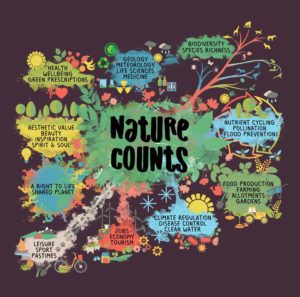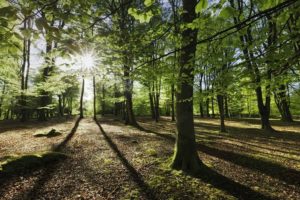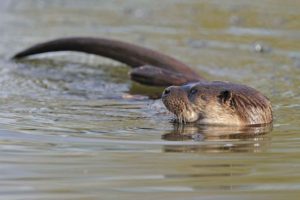A new report – Sheffield State of Nature 2018 – has brought together a wealth of information on Sheffield’s many natural assets. As well as showcasing the city’s impressive array of natural habitats, the report highlights a pressing need to do more to protect local wildlife whilst recommending ways to achieve this.
The report reveals that:
- Over a third of Sheffield is covered by sites that are designated (i.e. protected to some extent), with the amount positively managed or in a favourable condition for wildlife consistently increasing. Over 100 Local Wildlife Sites, however, are still in need of better management.
- An impressive 16% of Sheffield is wooded, far higher than the UK average of 10%, and over 90% of Sheffield’s residents have access to a large area of woodland within 4km of their home.
- Sheffield’s woodland birds are doing well but farmland birds represent 4 of the 5 most severe declines in local bird species, mirroring a national trend.
- 26 out of Sheffield’s 31 fish species have recolonised or been reintroduced to the city’s rivers and otters have returned to the Don, thanks to tireless efforts to improve its water quality.
- There is a need to better understand how local wildlife and habitats are faring in the long term. Despite having a wealth of information, gaps in the data make it difficult for us to identify and report, with confidence, changes over time. Many areas of additional priority habitat are known but unmapped, and so unprotected, leaving them vulnerable to degradation.
- Ongoing collaboration between local groups, landowners and land managers – as well as cementing the value of wildlife to the public – is key for the future protection of Sheffield’s wildlife and wild spaces.

The new Sheffield State of Nature 2018 report – the first of its kind and the exciting culmination of the two-year Nature Counts partnership project, supported by the Heritage Lottery Fund – represents the coming together of many organisations and individuals to show what we know – and don’t know – about Sheffield’s wildlife and wild places. The project’s aim has been to explore, celebrate and challenge our knowledge of the local environment to produce a snapshot of how nature in Sheffield is faring.
The report was developed through the Nature Counts partnership – a collaboration of Sheffield & Rotherham Wildlife Trust, Sheffield City Council Ecology Unit, Museums Sheffield (Weston Park Museum), the University of Sheffield, Sheffield Hallam University, Sorby Natural History Society and Sheffield Bird Study Group.
The report showcases the wide variety of habitats that Sheffield boasts, from moorlands and uplands in the west, through to grasslands and farmlands, rivers and reservoirs in the district’s centre, to a wooded and green urban landscape in the east. This mosaic of habitats has the potential to support a rich diversity of species.
A key finding of the report is that over 36% of the Sheffield district is covered by sites that are designated (i.e. protected to some extent) with 25% protected at European level. Over 99% of Sheffield’s Sites of Special Scientific Interest (SSSIs) are in ‘favourable’ or ‘unfavourable recovering’ condition, higher than the UK figure. Over half of Sheffield’s Local Wildlife Sites (LWSs) are in positive conservation management, but over 100 are still not. There is some uncertainty surrounding the future protection of our European-protected habitats and support for the management of farmland habitats post-Brexit.

The report also showcases the exceptional extent of Sheffield’s woodland. 16% of Sheffield is wooded, far higher than the UK average of 10%. Sheffield supports over a third of South Yorkshire’s woodland, despite covering less than a quarter of the area, and 1,256ha of ancient woodland can be found across the district, 92% of which is protected to some extent through site designations. Over 90% of Sheffield’s residents have access to a large area of woodland within 4km of their home. Sheffield’s woodland birds are doing well but others are mirroring national declines: 4 out of the 5 most severe declines of local bird species correspond to farmland specialists.
Rivers are central to Sheffield’s ecology and draw wildlife into the heart of the city. The report reveals that 26 out of 31 fish species have recolonised or been reintroduced and otters – one of the UK’s most elusive mammals – have returned to the Don thanks to the efforts of many people, and organisations, who have worked hard to reverse the negative impacts of Sheffield’s industrial past on its waterways.
It is clear from the report that local threats to wildlife mirror many national trends, such as habitat loss and fragmentation, pressure from development and non-native species introductions. Such threats are all too real with the near-disappearance of priority species such as white-clawed crayfish, turtle dove and water vole. The report recommends the development of targeted conservation action plans for these key indicator and priority species. Promoting the value of local wildlife and raising awareness of habitat and species management among landowners and land managers will be critical in achieving this.
The report also highlights a need to develop strategic plans to minimise the introduction and spread of key invasive non-native species and their impact on local native wildlife and habitats, through effective management as well as raising awareness with the general public. This includes suitable wildlife gardening and the creation and management of urban greenspaces, coupled with the need to carefully balance recreational demand with the provision of undisturbed areas for wildlife.
 Producing the report has also highlighted just how many people have come together in an effort to understand and protect Sheffield’s wildlife and wild spaces. The River Don is now an impressive natural resource, coaxed back to its former glory through tireless restoration and conservation efforts. Our stunning ancient woodland sites thrive as a haven for both wildlife and people, and urban Sheffield continues to grow greener for the benefit of everyone.
Producing the report has also highlighted just how many people have come together in an effort to understand and protect Sheffield’s wildlife and wild spaces. The River Don is now an impressive natural resource, coaxed back to its former glory through tireless restoration and conservation efforts. Our stunning ancient woodland sites thrive as a haven for both wildlife and people, and urban Sheffield continues to grow greener for the benefit of everyone.
Despite these efforts, there is still a great deal that is not known about Sheffield’s natural environment and the wildlife it supports. There is a wealth of data, but there are still many gaps for some species or a lack of consistency in data collection that make it difficult to identify and report, with confidence, changes over time. Many areas of additional priority habitat e.g. grassland are known but unmapped, and so unprotected, leaving them vulnerable to degradation.
The report recommends increasing the available resources for structured ecological surveys and citizen science projects to help collect systematic data on key indicator species, mapping and surveying the habitats that they rely on, and promoting data sharing so that trends can be identified and acted upon.
Improving and increasing habitat connectivity across Sheffield using landscape features such as woodland blocks and wildlife corridors, through actions such as the restoration, protection and management of hedgerows, rural road verges and field boundaries, is also a key recommendation of the report.

As well as producing the Sheffield State of Nature 2018 report, over the last two years the Nature Counts team has also undertaken a series of citizen science projects, including mapping native bluebells across the city and recording the return of the otter to the River Don in the heart of Sheffield. The data and results from these surveys have been incorporated into the main report.
It is hoped that the Sheffield State of Nature 2018 report will be a catalyst for nature conservation across Sheffield – to better inform and target delivery, working in partnership across the city for the benefit of wildlife and people.
Sara Blackburn, Nature Counts Project Coordinator and Editor & Lead Author of the report, said:
“Having worked on the Nature Counts project for two years, including producing the Sheffield State of Nature report, it’s clear that many individuals and organisations in Sheffield work tirelessly to build a better future for the wildlife and wild spaces we all love.
“There’s also a huge appetite for citizen science in Sheffield. For example, nearly 500 people helped us map the distribution of hedgehogs across the city and over 20 dedicated people helped us collect over 120 field signs of otter along 24km of the river Don, helping to inform this report.
“Despite these efforts, local threats to wildlife, such as invasive species, remain and there’s still lots we don’t know about Sheffield’s natural environment. The challenge now is supporting people to record, monitor and protect Sheffield’s key species and habitats, and to promote the active conservation of wildlife for future generations.”
Professor Philip Warren, from the Department of Animal and Plant Sciences at the University of Sheffield and a member of the Nature Counts steering group, said:
“Most of what we know about what is happening to our biodiversity in Sheffield is through the efforts of hundreds of naturalists, recorders and researchers who dedicate much time and effort to documenting where species are found from year to year. A report such as this is vital in bringing all that information together to see the bigger picture of how our wildlife is faring, what is changing, and where we should be targeting our efforts to conserve the biodiversity in our own back yard.
“In 2016 we had the last UK State of Nature report, but it is also important to have reports like this that take stock of our natural environment at regional and local scales, because this is where many practical, on the ground, conservation and planning decisions are made.
“The report reveals many fascinating stories about our wildlife, some successes, but some that are serious concerns. These shed light on the many different pressures on biodiversity, and also on the ways in which we can, whether through policy or individual actions, make a real difference.”
Lisa Firth, Head of Parks and Countryside at Sheffield City Council, said:
“We particularly welcome The Sheffield State of Nature report and acknowledge just how much work has gone into it from all of the organisations involved. This invaluable work is now helping us to identify what our priorities should be for the city in terms of protecting our natural habitats and local wildlife.”
For more information, visit wildsheffield.com/stateofnature
Download the Sheffield State of Nature 2018 summary report
Download the Sheffield State of Nature 2018 report
